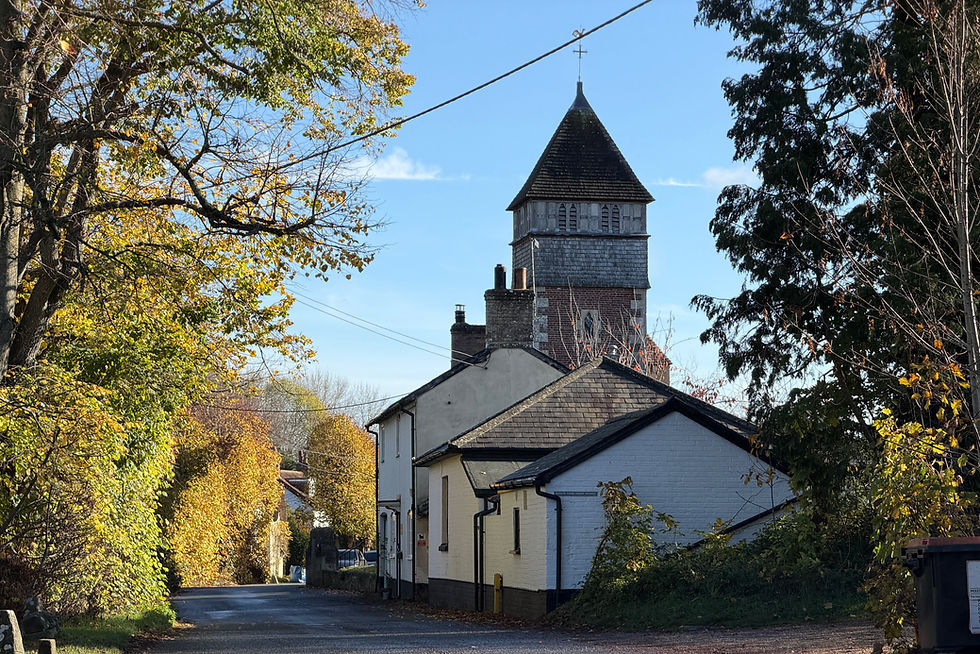Boyton and Sherrington and some of their Hidden Secrets by Elaine Perkins
- Elaine Perkins
- Apr 13, 2022
- 2 min read
Updated: Mar 13, 2023

The villages of Boyton and Sherrington lie hidden in the pretty Wylye Valley. The area around these settlements has been inhabited for thousands of years with the number of prehistoric tumuli and long barrows in the location testifying to that fact. Most of the barrows and tumuli lie in prominent locations above the villages including a well preserved bowl barrow which faces north towards the river and the ridges beyond. However, unusually, there is also a long barrow located in the valley close to the river Wylye. It is a mystery as to why this location was chosen but might hint at the importance the then inhabitants gave to this area of the river. This significance could stretch to the mound at Sherrington thought to have been a motte built entirely by the Norman landowners, its location in the valley by the River Wylye and clear springs suggests that its origins are much earlier and could have been originally built for a very different purpose than that of a defensive hill.


The same type of location is found at the prehistoric monumental mounds of Silbury and the more recently established ones at Marden Henge and Marlborough. Today the mound epitomises hidden Wiltshire as it lies on private land and is covered in trees. Even from the best view in Sherrington churchyard it is very difficult to see it or imagine how it might have looked. However, the sacred nature of the place is not lost on the visitor.
Since prehistoric times the ownership of the villages has changed hands many times throughout the ages. Of particular influence were the Norman family named Giffard. This mainly ecclesiastical family possibly built (or remodeled) the above mentioned motte at Sherrington and added the 13th century chapel to the church of St Mary at Boyton. It is thought that Sherrington church’s unusual dedication to the twin middle eastern saints of Cosmas and Damian was in honour of the only knight and crusader son of the family. The knight’s tomb in the chapel at Boyton could be his. There are many things to see in the building at Boyton and there are helpful guides available to the visitor describing the artwork etc. Of particular note are the tombs and the large round window of the chapel. More unusual is the oyster shell believed to have been used by the early artists to hold paint when they decorated the chapel.



The large manor house, built in the 1600s, is very close to the church and is very prominent from the churchyard. It was, briefly, the residence of Queen Victoria’s youngest son Prince Leopold.

Sherrington church, is much smaller but well worth a look inside for its Jacobean wall texts. There is also a certain sense of religious fervour about the place with Bible quotations still attached to the church and old rectory walls.



There is plenty of opportunity for walks here, either along the river or on to the footpaths above the steep area and the strip lynchets known as The Cliff that lies south of Sherrington. Those with more energy could even join up with the Hidden Wiltshire walk on the Great Ridge.


All in all a lovely and interesting area to visit with lots of hidden things to see.


Updated to include a map of the walk.








Really interesting, thank you so much. We walked through both villages yesterday, and took time to visit the lovely churches, and saw the barrows on the ridge above. I actually saw a weasel, a very rare sight, when we stopped for lunch. Keep these coming, they’re terrific.. Tony Rowlands.